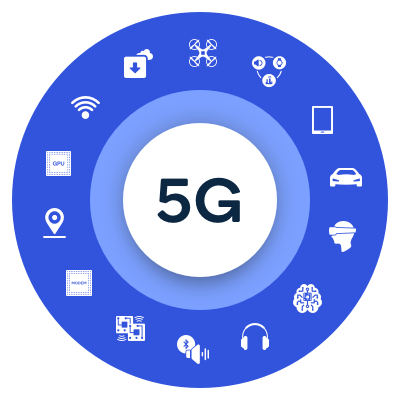Mobile App Architecture – Complete Guide On Basics to Building in 2023

What is the first thing that comes to mind when you think of an “App”? It makes life more accessible and smarter, right? But when you are a business person, you will know it takes a hierarchy and segments of tasks to take an idea to a successful driving app. One important section is mobile app architecture, which defines your app in all essential aspects: presentation, business, or data. We will be exploring all whats, hows, whys of mobile app architecture in the blog.
Highlights
- 1 Mobile App Architecture – Complete Guide On Basics to Building in 2023
- 1.1 What is Mobile App Architecture? How is it Different From Design and Technology?
- 1.2 Explained Diagram: Three Core Layers of Mobile App Architecture
- 1.3 Other Platform’s App Architecture – Cross and Hybrid
- 1.4 Conclusion
For starters, architecture is substantial because it improves the effectiveness of an application for a particular platform. Moreover, with the wrong framework, an app is likely to fail. Businesses with unique apps with unique ideas are like a trend now. The total app market is projected to reach US$465,655 million in 2022. It then is forecasted to grow at a CAGR (Compound Annual Growth Rate) of 8.32% by 2026.
However, coordinate a brilliant app idea with a mobile app architecture. Even with technological advancements and inventions, mobile apps are. The advent of 5G and devices created for the technology advances efforts for the developers and designers conclusively for a business. So it is taking more effort every next day.

Source: Qualcomm
An excellent mobile architecture would serve these multiple purposes.
But what is mobile app architecture? For starters, let us know that.
What is Mobile App Architecture? How is it Different From Design and Technology?
Mobile app architecture is the collection of several procedures and approaches that imply certain rules, approaches, and practices to form an application. It is the entire explanation of a mobile app from tech stack, data collection, and flow. It supports making the development and scaling of an app easier. Everything an app would express is in the architecture, especially all the key facets.
The question arises: What is different with app architecture,
The development methodology and wireframes for design. The difference is mobile app architectures also accomplish business essentials with the industry criteria.
Explained Diagram: Three Core Layers of Mobile App Architecture
The section will understand the mobile app architecture with a diagram built with several layers and pieces. The three core layers are presentation, business reasoning, and data.
Presentation Layer
Presentation layers are a collection of the processes that decide the exhibition of an app.
It is the exterior of any mobile application that users experience and watch with – look, interfaces, designs. It is the representation of the app. The app’s exposition also involves an appropriate data layout and robust confirmation of the means for guarding the apps against any ailing admission.
Under this layer, the methods like wireframing, user interface, and user adventure for a mobile app. All the processes are conducted in this layer to produce a unique impression on consumers that compels for conversions.
Business Layer
It is the section in which all the logical characteristics of the data cluster, continuation, and orientation are taken into account. In simple language, this section is about how the business will be shown in the facade of the users. It deals with all the business pursuits in which it targets an impasse of the consumers and fixes with expertise solutions through an app.
It discusses how the problem is served to the consumers through an app. It further adjoins two sublayers; domain and service layer. The domain layer is to coordinate the expertise and acquaintance linked to the troubled areas that it serves. Service layers undergo the outcomes of the app that it acts directly to the end-users.
Data Layer
Users should get competent and protected data flow within the app or transactions. The purpose is treated in the data layer; it performs the efficacy of data, upkeep, rescue, and other data-driven purposes. All the data obtained tools service providers are included in sustaining data transactions.
In this, the developers have to be pertinent with the data, which can be revised as per the future requirements of the businesses. This portion of the entire development is only exposed to the developer, and end-users are in no connection with it. So, it has to be entirely dealt with by the developers.
All three layers are categorized further under two sub-coating – Persistence and Network. Persistence allows permits to data with resources like API. The network portion is all about transmission, routing, and error declaration via the network.
Android App architecture
Android is the widely accepted platform for the mobile applications operated and therefore materialized. Play Store is the largest medium of apps. In December 2021, apps in the Play Store will be 2.6 million. Yet there is no common mobile app architecture for Android applications. The older apps are also not developed with any particular strategy or precise Android app architecture.
Though there is an architecture that is generally adopted that is Clear Architecture. The principal architecture is espoused for the core functionality. The entire architecture is cut down into 3 different parts – how the app will be proposed to the end-users, how data would be encountered and governed, and the app’s core functions.
iOS App Architecture
iOS app architecture has a separate model from Android app architecture. Apple has applied a distinct recommendation for architecture that includes an MVC (Model-View-Controller) pattern. Experts, though, claimed that it is not the best solution. Here is the explanation of the architecture:
Model:- This division includes data persistence, various objects, managers’ networking codes.
View:- It’s like a presentation layer; it includes a process for the visible portion of the app, does not require any logic, and is therefore reusable.
Controller:- It includes the communication between the two mentioned above connecting the views to the data and is also accountable for setup, harmonizing, and diagnosing the user’s data.
Other Platform’s App Architecture – Cross and Hybrid
Besides the Android and iOS apps, there are distinct mobile app architectures like hybrid and cross-platform that also take account of other similar principles for the purpose.
Hybrid App Architecture
Just for the reminder, hybrid apps are ready to work on various OS like Android, iOS, and Windows. It has a single code bar for all of them. To explain the hybrid app architecture, we divide it into two layers – Web Picture and Native Wrapper Integrations. The web app is working inside a native wrapper.
Cross-platform App Architecture
Cross-platform app architecture conducts a similar code for multiple Operating Systems. Cross-platform apps are assembled with the technologies like React Native, Cordova, C#. the architecture is heeded to avoid the abundant cost of the Native apps, bringing apps to several platforms for broader audience reach and swift development.
Aspects to Consider Mobile App Architecture
Mobile apps are not always the same. No denial to that. And therefore, there are distinguishable attributes to take into account while making a mobile app architecture.
Platform and Device
Mobile apps are designed with the mindful attention of the platform according to your determined app users. I suppose you understand this. But if you don’t, you should get a development directory that clears your purposes and lodestars you for the entire operation. While opting for mobile app architecture, you should know what devices and platforms you are building it for.
Network Connections
While you prepare a mobile app, you cautiously design it with a minimal graphical load to readily utilize the app in the least bandwidth zone. Moreover, as mentioned earlier, the advent of the 5G tech will also outspread soon, so that would also be coped while drafting app architecture.
Screen Directories
Through your app, you are serving users a solution to their problem that is too efficient. That would be a basic idea. Right? So the operative flow of the app must be easily understood and accepted. Making an app architecture, you first decide how to make the flow the easiest. Placing the buttons and texts also in the more comfortable browsing and using.
Nudging Users for Updates
Foremost, you check if the purpose you serve requires real-time updates or push notifications. Even now, push messages are used with real-time updates of an app. For example, an e-commerce app notifies about their order status. However, both have their importance in the app’s functioning and user performance separately.
Ensure Proper Sequencing On How to Choose Mobile App Architecture Right For Your Business
In the last section, we consulted the factors that are the inner concerns of creating a mobile app architecture. In this section, we will know the factors that are the outer concerns of the architecture.
Pre-decide Cost for App
From the start point of an app, regarding the research and development, you always would require a budget. Trends at the development time and in the future would be determined in the app cost. To know more about the entire app development cost: refer to this guide, which regards and gauges all necessary aspects.
Timeline for the Development
Time is crucial while you create an application. It is a factor regarded when it is developed; it is the aspect in the duration of the development; it is the characteristic pondered in deciding the cost. An expertise entity would rightly merge and execute all these factors. The entity could be a mobile app development firm, an outsourced team, freelancers, or an in-house team.
Requirements of an App
Requirements of an app enclose the factors it incorporates, the platform it is made with and sourced in, the testing and maintenance of the app, and many more. Before diving into the architecture, these factors make it simpler to decision-making throughout.
Conclusion
The profit through an app relies on the short-term and long-term decisions made in the entire development procedure. Mobile app architecture is the base for all the decisions. It includes all the operations of making and executing the app. We have covered all the factors and their justification to use the architecture in the entire blog. The conclusion is while constructing an application for any purpose, architecture is a guard that would have all the justification for all the processes.



